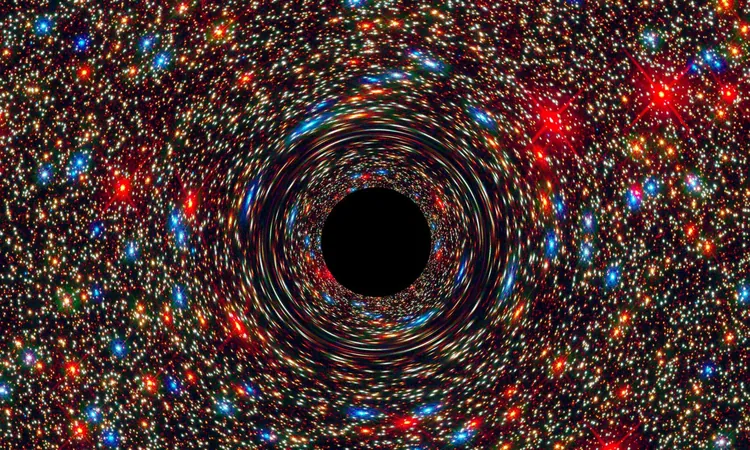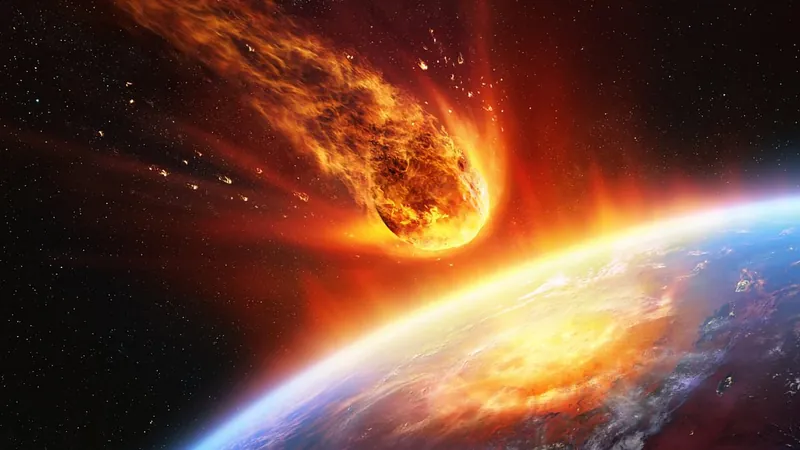
Astrophysicists Discover a Hidden 'Anthill' of Black Holes in Our Milky Way
2025-05-29
Author: Lok
A Shocking Discovery in the Cosmos
Over a century of stargazing has taken a fascinating turn as a team of astronomers reveals that a seemingly tranquil star cluster is actually a bustling hub of over 100 black holes. Located about 80,000 light-years from Earth, this cosmic 'anthill' challenges our understanding of star clusters and their movements.
The Basics of Stellar Neighborhoods
Star clusters are tightly-knit communities of stars born from the same colossal cloud of gas and dust. Think of them as cosmic neighborhoods where gravity keeps their solar residents close, creating two distinct types: open clusters, which are loose and scattered, and globular clusters, which are dense spheres filled with ancient stars.
Peering Inside the Intrigue
Globular clusters are akin to time capsules, holding the secrets of the Milky Way's infancy. Upon observing an odd formation of stars around a certain ancient cluster, scientists suspected something unusual—perhaps a strong push from unseen massive objects, likely black holes.
Black Holes in Plain Sight?
Astrophysicists Mark Gieles and Fabio Antonini have proposed that these rogue black holes may be remnants from powerful supernovae, each with a mass approximately 20 times that of our Sun. Their gravitational influence has gradually ejected nearby stars, creating long, flowing streams of stellar debris across tens of thousands of light-years.
Cosmic Highways Revealed
As these stars drift away from their cluster, they form a tidal stream that arches around our galaxy. The implications are far-reaching, suggesting that many more clusters could be shedding stellar highways, influenced by the hidden black holes within.
Collision Course with Destiny
The enigma deepens as researchers consider the number of black holes in these clusters. Although difficult to observe directly, the ejected stars provide indirect evidence of their existence. Some trapped black holes might eventually collide, creating gravitational waves detectable from Earth—an exciting prospect for future astronomy.
Unlocking Galactic Evolution
The presence of black holes in these ancient clusters offers new insights into how galaxies evolve. As some clusters lose stars, they may eventually leave behind only dark remnants, changing our understanding of galactic history and structure.
Charting the Cosmic Frontier
Astronomers are gearing up for a closer look, eager to leverage new technologies and extensive surveys that could uncover similar black hole populations in other star clusters. This could lead to a profound shift in how we view the dynamics of our galaxy.
The Bigger Picture
From stellar explosions to merging black holes, these discoveries showcase the intricate dance of life and death among stars, shaping the Milky Way’s cosmic landscape. As the search for dark wanderers continues, the Milky Way's serene exterior hides a tempest of gravitational forces just waiting to be unveiled.
This groundbreaking study has been published in the prestigious journal Nature Astronomy, heralding a new era of celestial exploration.

 Brasil (PT)
Brasil (PT)
 Canada (EN)
Canada (EN)
 Chile (ES)
Chile (ES)
 Česko (CS)
Česko (CS)
 대한민국 (KO)
대한민국 (KO)
 España (ES)
España (ES)
 France (FR)
France (FR)
 Hong Kong (EN)
Hong Kong (EN)
 Italia (IT)
Italia (IT)
 日本 (JA)
日本 (JA)
 Magyarország (HU)
Magyarország (HU)
 Norge (NO)
Norge (NO)
 Polska (PL)
Polska (PL)
 Schweiz (DE)
Schweiz (DE)
 Singapore (EN)
Singapore (EN)
 Sverige (SV)
Sverige (SV)
 Suomi (FI)
Suomi (FI)
 Türkiye (TR)
Türkiye (TR)
 الإمارات العربية المتحدة (AR)
الإمارات العربية المتحدة (AR)